The Ultimate Timor Leste Backpacking Guide (Updated for 2025)
This post may contain affiliate links. If you make a purchase using one of these links, I may receive a small reward at no extra cost to you. See my Disclosure Policy for more information.
Are you going to Timor Leste? You’d be one of very few who venture into this small country. So few tourists visit that I consider it to be the final bastion of authentic backpacking unspoiled by mass tourism in Southeast Asia.
I traveled independently to Timor Leste and had a blast! Beaches all to myself, the colorful tais, the mountains, and the omnipresent churches… But the best thing about Timor Leste was the people – friendly, welcoming, helpful, fun!
I hitchhiked across the country, met so many colorful personalities, and made so many friends!
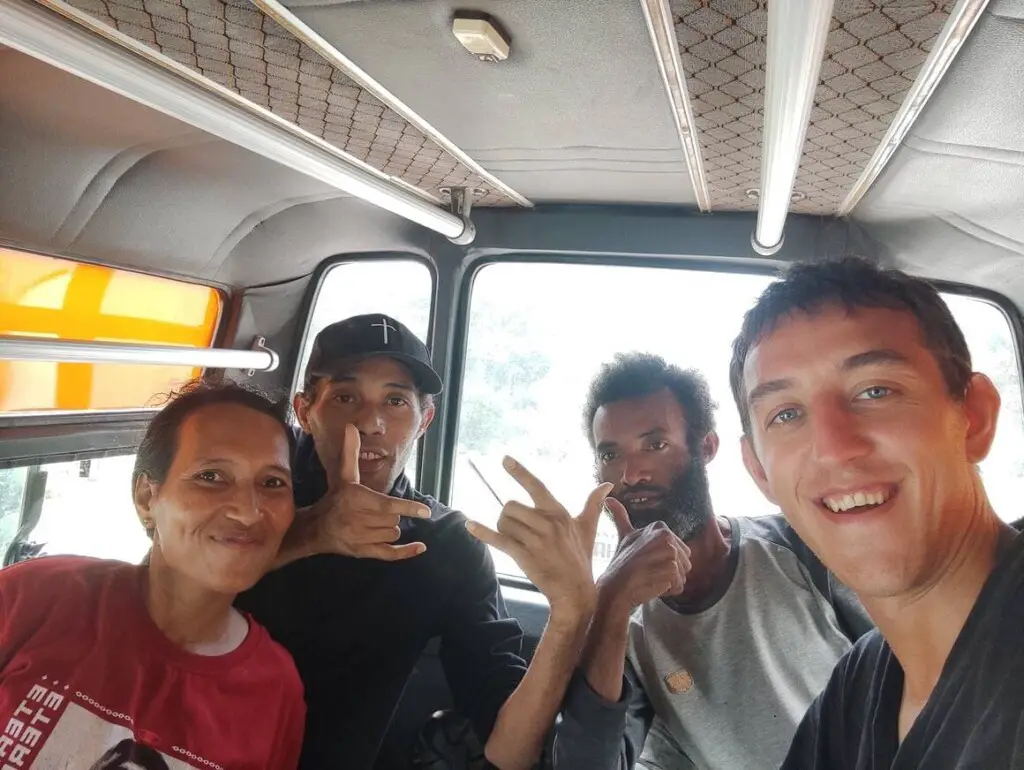
While no guide can prepare you for the unscripted adventure that is Timor Leste, I can indeed provide you with some first-hand information on things to see, organizing transport, accommodation, internet, and other logistics.
If you want a quick overview of the country, these are some fun facts about Timor Leste, that I learned while backpacking there.
Timor Leste Example Itineraries
If you want to see a bit of everything in Timor Leste you’d need around 2 weeks.
The mountainous terrain and slow traveling make the country bigger than the pure numbers show. If you also want to visit the Oecussi Exclave or Atauro Island, you’d want a few extra days.
I spent 11 days which I felt was not enough – I wanted to stay even more!
All this being said, even 7 days will allow you to have some adventures in Timor Leste.
Here are some sample itineraries:
The Beach Bum (7 days)
- Dili – 1 day
- Atauro Island– 2 days
- Baucau – 1 day
- Jaco Island (Valu Beach) – 1 day
- Com – 2 days
Mountains Beckon (8-10 Days)
- Dili – 1 day
- Ermera – 1 day
- Mt. Tatamailau (from Hato Builico) – 2-3 days
- Mundo Perdido (from Baucau)– 2 days
- Mt. Matebian (from Baguia) – 2-3 days
A bit of everything (14-17 Days)
- Dili – 2 days
- Atauro Island – 2 days
- Oecussi Exclave (ferry dependant) – 3-4 days
- Mt. Tatamailau (from Hato Builico) – 2-3 days
- Baucau – 1 day
- Viqueque (+Mundo Perdido) – 2 days
- Com – 1 day
- Jaco Island – 1-2 day
Map of places of interest

Following any predetermined itinerary for Timor Leste (the ones above for example) is subject to many variables and unknowns – transport, weather, fatigue, local guides, etc.
Timor Leste is a country where it’s best to backpack by going with the flow!
The map below includes all places of interest in the country to help you with orientation. It is by no means exhaustive.
Best places to visit in Timor Leste
Even though Timor Leste is a rather small country, different areas of the country have their own distinct feel and uniqueness.
Dili
The capital and the biggest city is usually the first stop of travelers to Timor Leste. Sometimes the only stop (some people are missing out!).
Dili has a few museums, a few nice markets, fancy hotels, backpackers’ hostels, and a huge statue of Christ. You can read my recommendations about what to do in Dili.
Baucau
The second-biggest city is as charming as cities in Timor Leste go. It’s the one I liked the most from the ones I visited.
There’s the beautiful Pousada, a colonial-era residence, turned into a hotel.
There’s the vibrant market – perfect to observe local life in rural Timor Leste. There’s the pristine Uatabo beach just 5 km from Baucau – all for myself when I went there. And more, and more.
Find out my recommendations for the best 10 things to do in Baucau.
Lospalos
In the east of the country is the home of the Fakaluku people with their bizarre houses on stilts. There isn’t much more to do in Lospalos, but it’s a suitable stop on your way to Jaco Island.
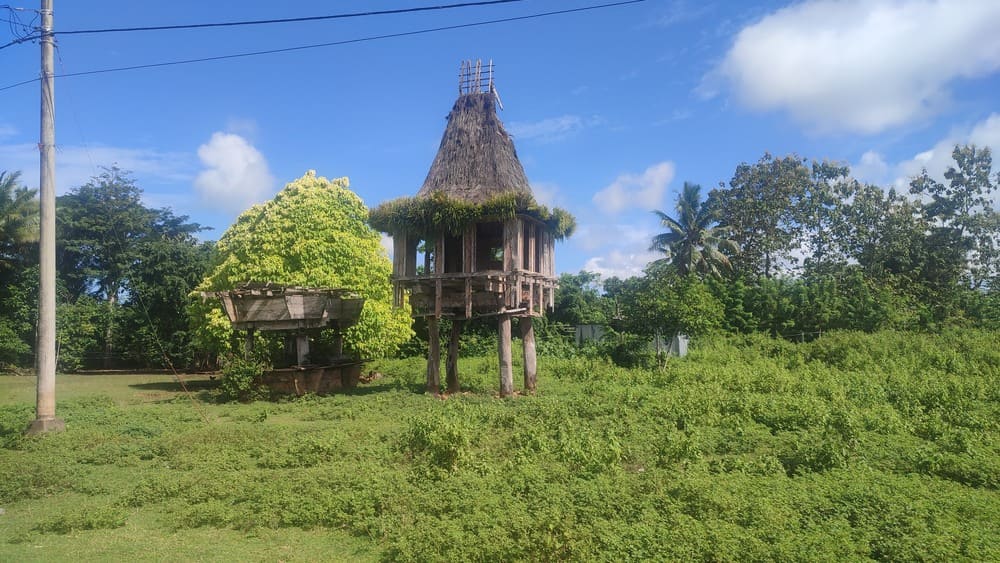
Com
Com is the closest thing Timor Leste has to a backpacker resort. Right on the beach with plenty of guesthouses, chill bars, and all in all a relaxing atmosphere.
In a bout of cosmic coincidence, I went there during the 2023 Total Solar Eclipse.

Venilale
It’s a really small town 30 km south of Baucau that boasts an impressively colorful former school and a very busy local market. It’s a good lunch stop on your way to Viqueque.
Viqueque
This city in central Timor Leste is famous for being the headquarters of the Fretilin – the guerilla resistance during the Indonesian occupation and now a major political party.
Viqueque is a very religious city. I was there during the Sunday Mass and the whole city had gathered for a prayer at the enormous cathedral.
There isn’t much to do in Viqueque apart from that, but it’s a good base for hiking the Mundo Perdido or exploring even less visited places in South Timor Leste.
Maubisse
A small town directly south of Dili with a beautiful Pousada and a charming feel. A good base for hikes in the surrounding mountains.
Same
I didn’t go to Same myself, but a Portuguese teacher I met told me it’s the most beautiful city in East Timor. Perhaps I should visit again to find out.
Same can be your base to trek to Mount Cabalaki and enjoy the natural beauty that Timor Leste has to offer – lush vegetation, small villages, and of course, coffee plantations! Talking about coffee…
Ermera
Less than an hour away from Dili, Ermera is the epicenter of Timor Leste’s coffee industry.
In Ermera you can visit the coffee plantations and observe the process of collection, roasting, or packing, depending on the season.
Timorese coffee is considered high-quality and it’s totally bio. The locals just don’t have money for pesticides and fertilizers, so you can be sure it’s as clean as nature makes it.
One of the biggest buyers of Timorese coffee is Starbucks!
Balibo
The place where five Australian journalists were killed in 1975 to prevent them from telling the world of the atrocities committed by the Indonesian military in Timor Leste.
The Balibo house, as it came to be known, was where they barricaded and painted the Australian flag in an attempt to inform the military that they weren’t Timorese guerilla. This didn’t help them. The movie Balibo (2009) tells that story.

The painting of the flag is still faintly visible on the wall. The Balibo House is now the local community center.
The other notable sights in Balibo are the 400-year-old Portuguese fort and a cool unexplored cave.
Other notable, but smaller cities
- Lautem: Gateway to Com, Lospalos, Jaco Island and Nino Konis Santana National Park
- Liquica: Scuba diving and pelicans.
- Manatuto: Beaches where you’ll be alone.
- Aileu: The former Falintil resistance training camp
- Suai: This town is so remote, that even the Japanese couldn’t get there. The Australian Sparrow Force stuck around Suai for almost a year after the Japanese invasion of East Timor in 1942. Suai is also the center of Timor Leste’s oil industry (which is yet to blossom).
Atauro Island
Atauro is the island you can see if you look north from Dili on a clear day. It’s only 30 km and it takes about 2 hours by ferry.
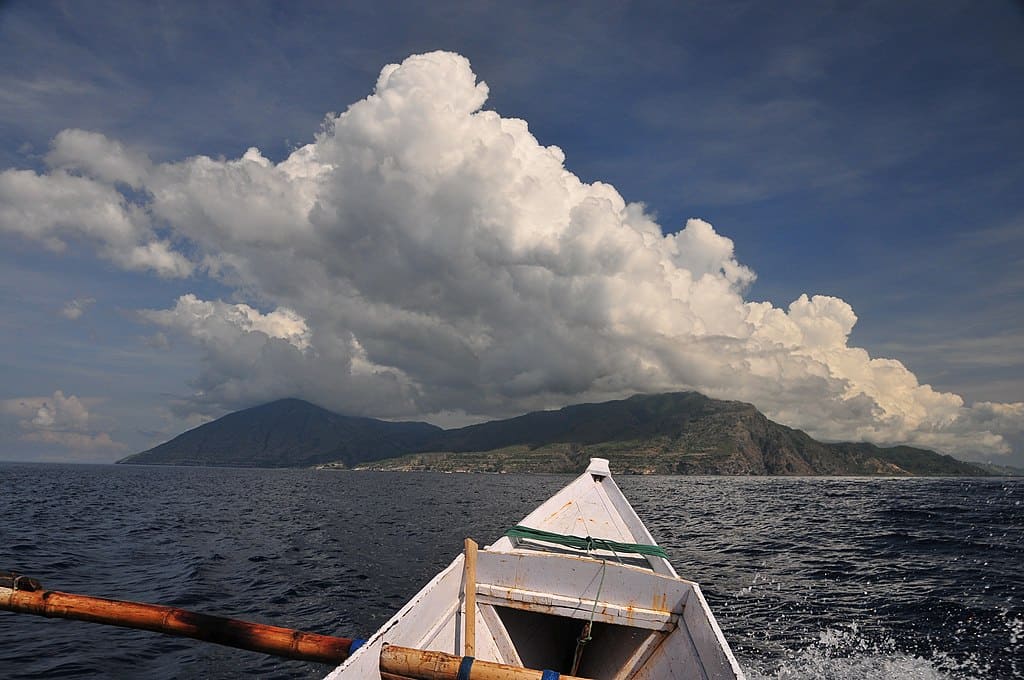
There’s a weekly Government-run ferry service on Saturday that will take you there and back for 10$ and give you 3 hours on the island.
However, I recommend you stay at least 1 night, (better yet 2-4), to explore the local culture and biodiversity (Atauro was found to have the most biodiverse waters in the world), then charter a boat to bring you back (40-50$).
On Atauro there are a few eco-lodges, guesthouses, and hotels that will take care of your gastronomical needs (just hunger, actually, nothing fancy; this island is poor!)
Atauro Island is a snorkeling paradise! You can get it all organized at the Atauro Dive Resort in Beloi, which despite the name, has a dormitory and is perfectly suitable for a backpacker’s budget.
Oecussi Exclave
Have you noticed that the territory of Timor Leste is not contiguous? There’s the Oecussi exclave situated to the west of East Timor proper and surrounded on three sides by Indonesian West Timor and the sea to the north.
Oecussi is where Timor Leste began. In the 16th century, this is where the Portuguese traders and Dominican Friars landed and first created a base. It was not until 2 centuries later that the seat of the Portuguese administration was moved to Dili.
Oecussi was kind of ignored after that. When the official borders were drawn in the 19th century, it was included in Portuguese East Timor, because it had always been Portuguese. Fast forward through the 20th century and the Indonesian Occupation and today, Oecussi is still part of Timor Leste.
Oecussi’s spelling is a point of contention. Some alternative spellings are Oecusse, Oe-Kussi, and Oe-Cusse.
How to get to Oecussi
To get to Oecussi, take an overnight ferry from Dili that runs twice a week. There’s also a daily flight for those with bigger budgets. Check the full and up-to-date ferry and flight schedule here.
There are no official border crossings between Oecussi and Indonesia. The Wini Border Crossing has been opened, while the Napan Border Post is also planned to be operational soon.
What to see in Oecussi
Oecussi is a really interesting region. It’s pretty isolated, has a unique culture, and a very, very laid-back feel to it.
UN personnel stationed there report that it’s the best place to be given an assignment. Apart from visiting just to experience the vibe, some notable sites include:
- The Dominican Missionary Sisters Women’s College: the first female Catholic school in Oecussi, now a peaceful place for a stroll in the center of Ponte Makassar.
- Kumando: A bit beatdown today, but it was an important administration building during colonial times. There are plans to make it a community center.
- Church of St. Antonio / Nossa Senhora do Rosário: A beautiful church built in 1965. If you visit during Easter, don’t miss the procession that honors Jesus with a life-sized statue of his body.
- Cave of Santo António Polsiba: considered a sacred site by Oecussians as St. Anthony is believed to have appeared here.
- Ruins of King’s Palace of Oé-Cusse: Yup, there were kings. Oecussi’s history is wild, go read about it.
- Fatu-Suba: The ruins of an important former prison (ya, I know, ruins again…that’s how it is in Oecussi)
- Lifau Monument: That’s where the Portuguese landed in 1515, now commemorated by a statue of a ship and some friars.
- Numbei Market: A typical Timorese local market. Busiest on Saturday.
- Fonte Sagrada: A “Sacred Fountain” from Portuguese is a beautiful waterfall where locals hold rituals.
- Mud Geysers: Surprisingly, there are mud volcanoes in Oecussi, just like the mud volcanoes in Azerbaijan.
Mount Ramelau (Tatamailau)
Tatamailau is the name of the actual peak (meaning “Grandfather of all“), whereas Mount Ramelau is the name of the mountain, although they are used interchangeably.
This is Timor Leste’s highest peak and a Christian pilgrimage site. Every year pious Timorese trek to the top to pray to the 3-meter-tall statue of the Virgin Mary.
Trekking to Mount Ramelau is pretty easy. The starting point is at the small nearby village of Hato Builico from where it takes 3 hours to summit.
Jaco Island and Valu Beach
Jaco Island is sacred to the Timorese. Nobody lives there and there are no buildings.
It is just 700 meters from Valu Beach at the extreme east end of Timor Leste, though you should not swim across.
Their beauty is only matched by their isolation – getting to Jaco Island is a journey in itself.
Mundo Perdido
Mundo Perdido means “Lost World“, but we’re not talking dinosaurs. However, you’ll be able to see various species of snakes and monkeys as well as domesticated buffalos, horses, and cows.
To hike in the Mundo Perdido area, my advice is to hire a guide from Venilale. The local guides are knowledgeable and fun and add a lot to the experience.
Don’t forget to visit the abandoned Japanese war tunnels from WW2!
Mount Matebian
Trailing behind Tatamailau by a few hundred meters (2316 m. vs 2986 m.), Mt. Matebian offers amazing views as far as the sea on both sides of Timor Island!
To hike it, make your way to the village of Baguia (Bagia) first. There are microlets from Baucau every day.
Logistics of Backpacking in Timor Leste
In this section, you will find all the necessary practicalities for safety, money, transport, lodging, food etc. Everything you need to know, really!
Timor Leste is Safe!
Let’s start with the most important. If you were remotely interested in world news in the early 2000s, you might’ve heard about the troubled situation in post-independence Timor Leste. Those days are gone!
Today, Timor Leste is a safe, stable democracy with established political parties partaking in peaceful competition, low levels of crime, and honestly, one of the kindest people I’ve met around the world.
Just exercise normal precautions that you would anywhere else in the world. I sincerely hope this Timor Leste travel guide changes some perspectives on this wonderful country!
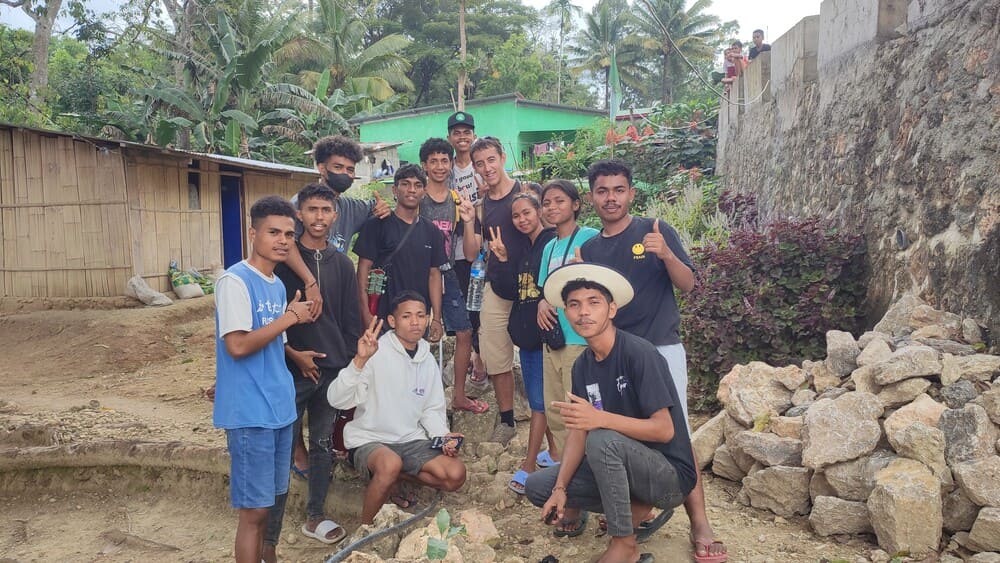
Getting to Timor Leste
There is only one international airport in Timor Leste – Dili’s Nicolau Lobato International. The bigger Baucau Airport is currently being repaired, but it might take a few years before it takes any planes.
There are regular flights between Dili and Bali (Indonesia) as well as Darwin (Australia).
A cheaper way to get to East Timor is to fly to Kupang (if you’re already in Indonesia) and then take the direct bus from Kupang to Dili which crosses at the Mota’ain Border Post.
The southern Indonesia-Timor Leste border at Motamasin is also open but getting there is a bit less convenient than going through Mota’ain.
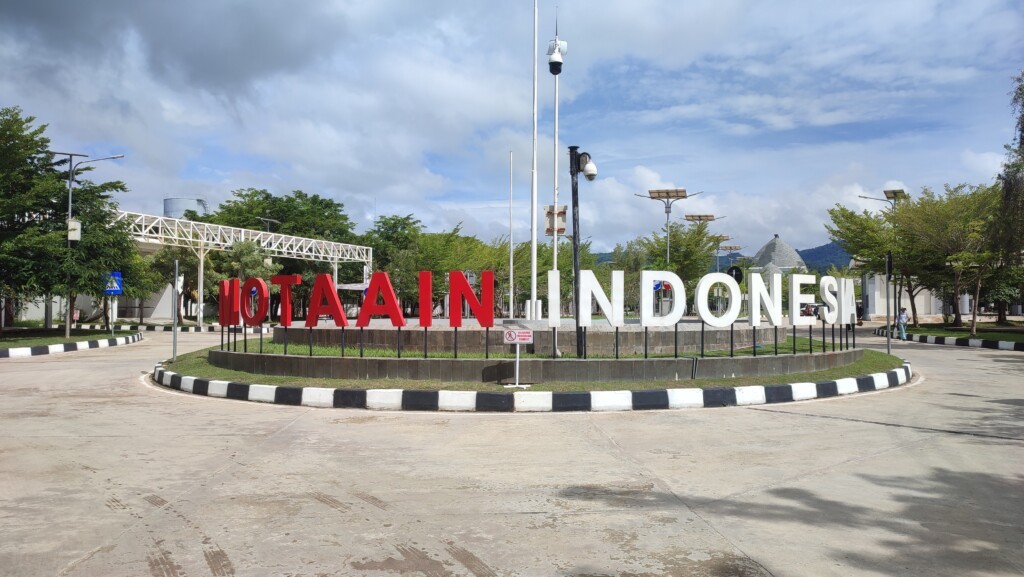
Recently, the land border at Wini has also been opened. You can get there by taking a bus from Kupang to Kefamenanu and changing to a taxi/bemo to Wini.
The Napan Border Post will be opened at some point in the future but isn’t operational yet.
Visa
Do you need a visa? That’s an important question to ask before traveling to any country.
It depends on your nationality and I strongly advise you to check the IATA Travel Center to find out.
Citizens of the EU, Schengen, Indonesia, and Cabo Verde are visa exempt. All other nationalities can get a visa on arrival at Dili Airport (30$, 30 days).
If you need a visa but want to come by bus from Kupang, you must get an authorization letter from the Timor Leste consulate in Kupang. As of 2025, nationalities that can get a Visa on Arrival for Timor Leste can also do so at land borders. The eligible borders at the time of writing at Mota’ain, Motamasin, and Wini. Visa on arrival costs 30$ in cash only.
Money, Currency, Cards, and ATMs
Read this specialized guide to money in Timor Leste!
The currency in Timor Leste is the US Dollar. They use different centavos coins instead of US cents, but those are also accepted.
Timor Leste is not as budget-friendly as neighboring Indonesia. It’s surprisingly expensive, especially when it comes to accommodation.
Budget hotels and guesthouses cost between 15$-35$ for a single room and more amenities quickly raise the price. Only Dili has hostels and a bed costs around 15$.
Food is cheap if you eat like the locals. A meal costs between 1-3$. Only Dili and Baucau have fancier restaurants where a meal is between 5-20$.
Credit and debit cards are not accepted almost anywhere. Bring cash!
There are reliable ATMs only in Dili. Some ATMs only accept local cards. Most ATMs do NOT accept Mastercard.
You can find ATMs that accept foreign Visas at Timor Plaza, next to Hotel Timor, and at the airport.
Internet Connectivity
Wifi
Forget about Wi-Fi. It only exists in high-end hotels and even there you might actually be given a SIM card with data, instead of a password to the Wi-Fi.
Local Physical SIM
Mobile data is cheap. The best provider in Timor Leste is Timor Telecom. They have 4G in bigger cities and the prices are reasonable.
For example, 7 days of unlimited data costs only 6$.
The SIM card costs 1$ with any operator if bought from an official store.
Street vendors may approach to offer you “pulsa” (internet credit) and/or a sim card, but I’d stay away from them. They won’t swindle you per se, but it’s more expensive than going to a store.
Expect coverage only in the center of cities and even then, speed is lackluster. Do not rely on the internet in Timor Leste!
Virtual SIM – Airalo
If you can’t be bothered to buy a local sim and your phone supports E-Sim cards, then Airalo is the best option for you.
1 GB of data with 7 days validity costs 6.50$ with Airalo and you can buy it before you arrive giving you instant access to the internet when you touch land. The validity period starts when the eSIM connects to any supported network.
You can buy the package on Airalo’s official website.
Transport
Due to the bad state of the infrastructure in many places around the country, coupled with the mountainous terrain, transportation in Timor Leste is slow at best, challenging at worst, and in some places – outright impossible during the rainy season.
Transport between cities
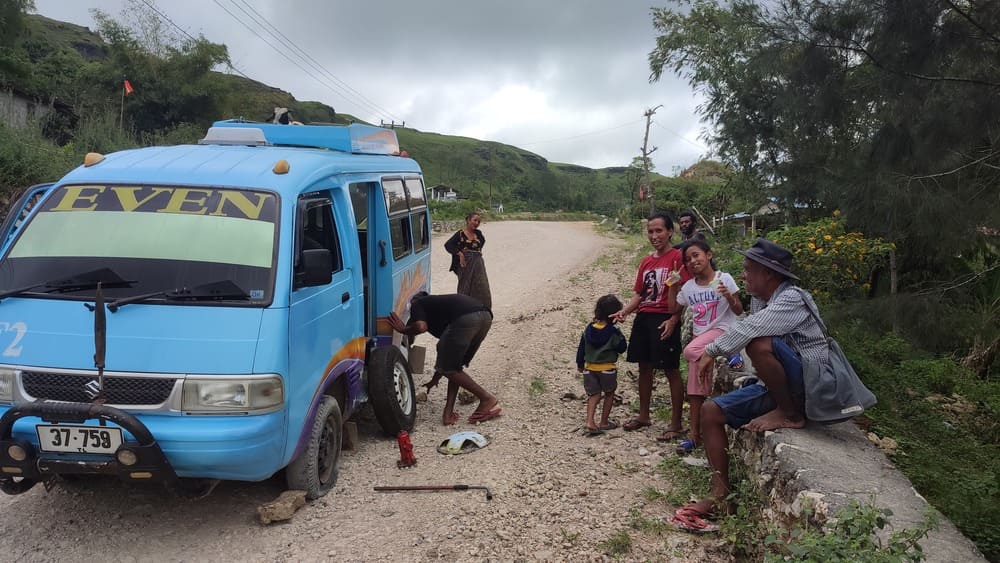
Microlets or microbuses go between the major cities in Timor Leste. Some popular routes are:
- Dili to Baucau (5$, 3h, many per day)
- Dili to Lospalos (8$, 6h, 3-4 per day)
- Lospalos to Tutuala (for Jaco Island) (3$, 3h, 1 per day)
- Dili to Same (5$, 4h, 2-3 per day)
- Dili to Ermera (3$, 2h, 2-3 per day)
- Dili to Viqueque (8$, 7h, 2-3 per day)
The only new road in the country is the northern road connecting the border town of Batugade with Lautem via Dili, Manatuto, and Baucau. It was recently constructed and the asphalt is perfect.
There are many infrastructure projects all around the country, but it will take time until the roads are up to par with what we’re used to in Southeast Asia.
Public transport inside Dili
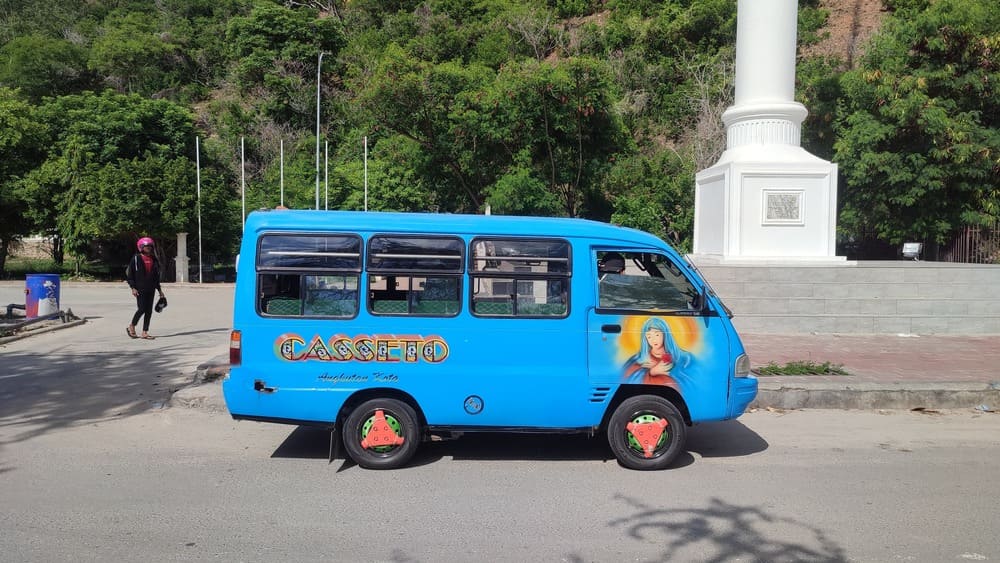
Dili is the only city with public transport (technically Baucau has 1 microlet connecting the New and the Old towns).
The city is served by a network of 12 microlet lines. They all cost 0.25$ regardless of distance.
To flag them down wave your hand and to get off them ring the railing with a coin.
Renting a car
Many travelers rent a car to explore the country. You can only rent a car in Dili. As far as I know, booking a rental car online for Timor Leste is impossible (let me know in the comments if you know a company taking online bookings).
A car costs around 40$ per day. For many routes outside the main northern road, you will need a 4×4, which costs 80$-120$ per day.
I want to strongly discourage you from renting a car, not only because of the high price but also because this will prevent you from really immersing yourself in the local culture.
The locals are fed up with UN personnel and their white jeeps and if you travel by car you become one of them in their eyes.
I believe that the best way to see the country is to hitchhike. This is a Timor Leste backpacking guide, what did you expect?
Hitchhiking
Hitchhiking in Timor Leste is easy and incredibly fun! I had the best moments of my trip while in somebody’s car. People are friendly, lovely and so, so hospitable.
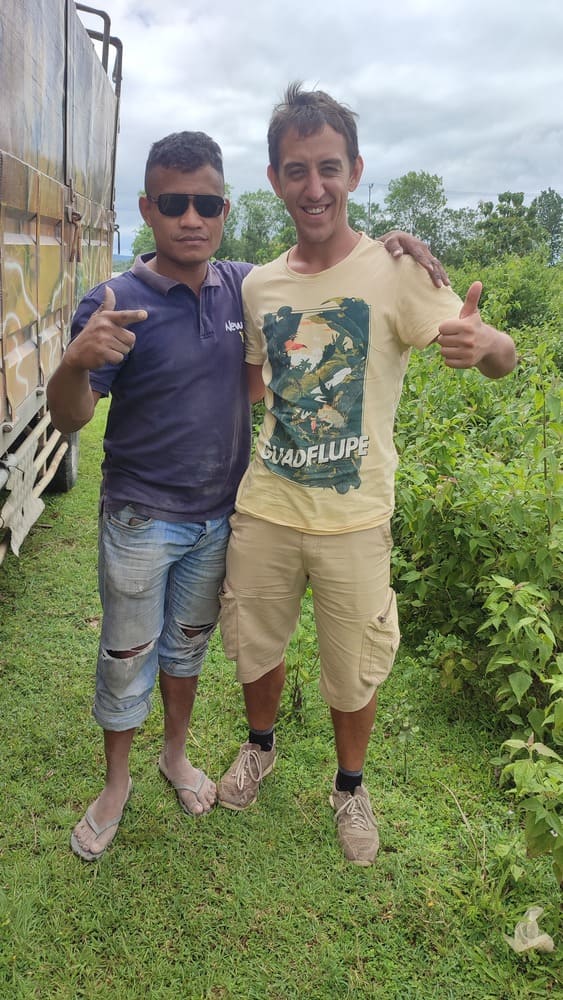
To hitchhike pat the air up and down. It works better than the thumbs-up.
Walk a little away from the bus stations, because many will come to offer you help on how & where to take a minibus.
Be open to riding in the back of a jeep and a food delivery truck. These are some of the rides I got. Sometimes traffic is sparse and beggars can’t be choosers.
Food
Food in Timor Leste is a blend of regional food like rice, fish, pork, cassava, corn, sweet potatoes, carrots, etc. with Portuguese and Indonesian influences.

You can find typical Portuguese meals like Feijoada (pork, cannellini beans, and chorizo) and Pastel de nata (the Portuguese tart that’s like creme caramel in a pastry cup), and the Indonesian staples Nasi Goreng (fried rice), Mie Ayam (chicken curry noodles soup), Bakso (meatballs) and Sate (meat skewers).
Some Timorese meals include:
- Batar Da’an: a mix of pumpkin, corn, and beans;
- Caril: mild chicken curry with potatoes and coconut paste;
- Ikan pepes: an entire fish, or sometimes pieces of fish, wrapped in banana leaves and copious amounts of spices and sauce;
- Ikan Sabuko: fish in tamarind marinade with basil and chili;
- Bibinka: grilled and layered coconut cake;
- Katupa: rice on coconut milk.
Fancy restaurants only exist in Dili. Outside of the capital, look for a warung (small restaurant) or rumah makan (bigger restaurant) for your stomach needs.
Most guesthouses can prepare you food as part of your accommodation deal.
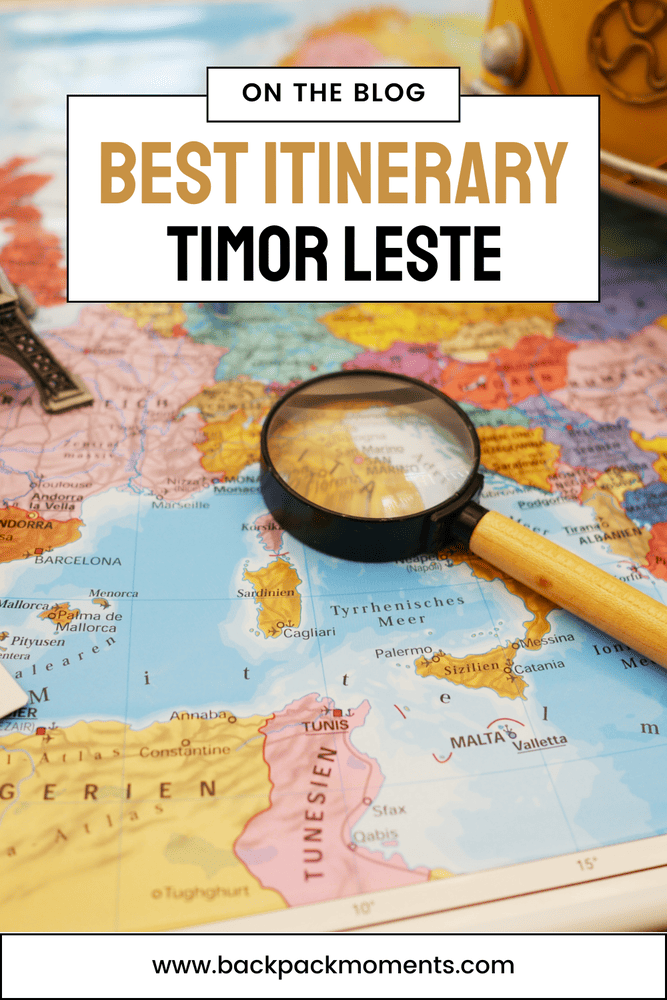
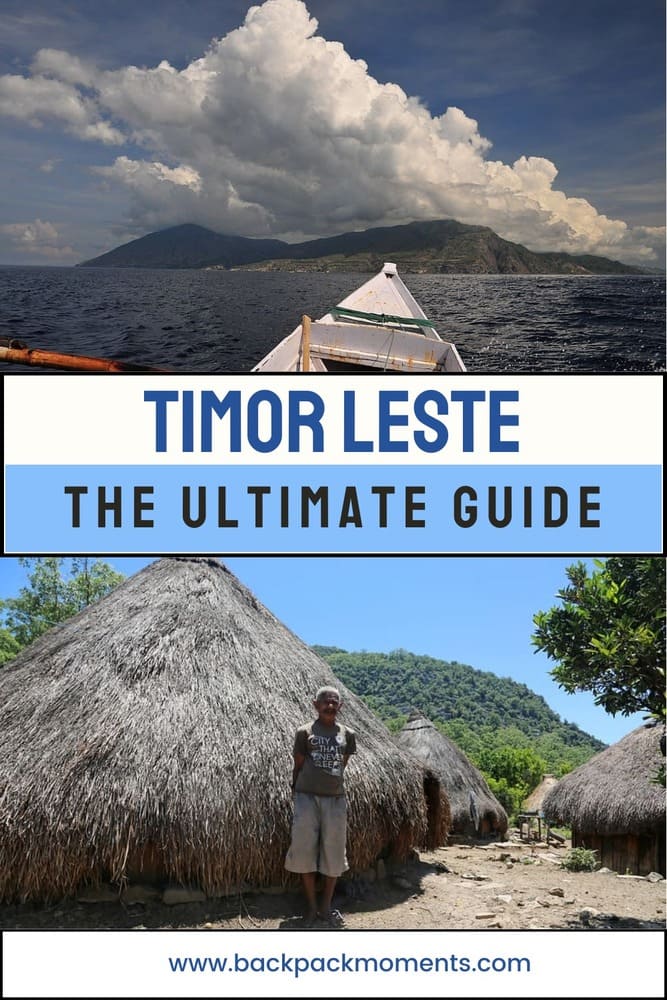

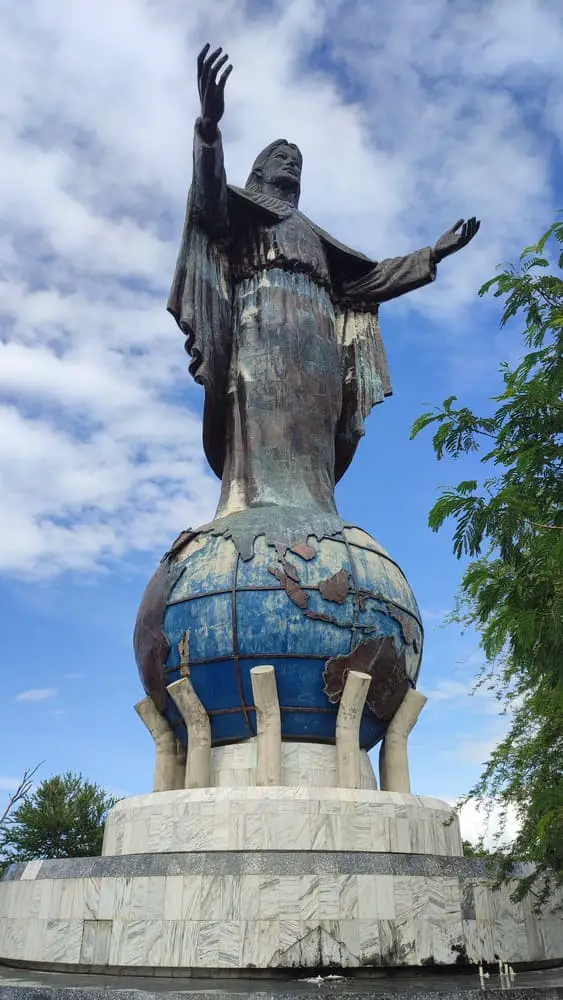
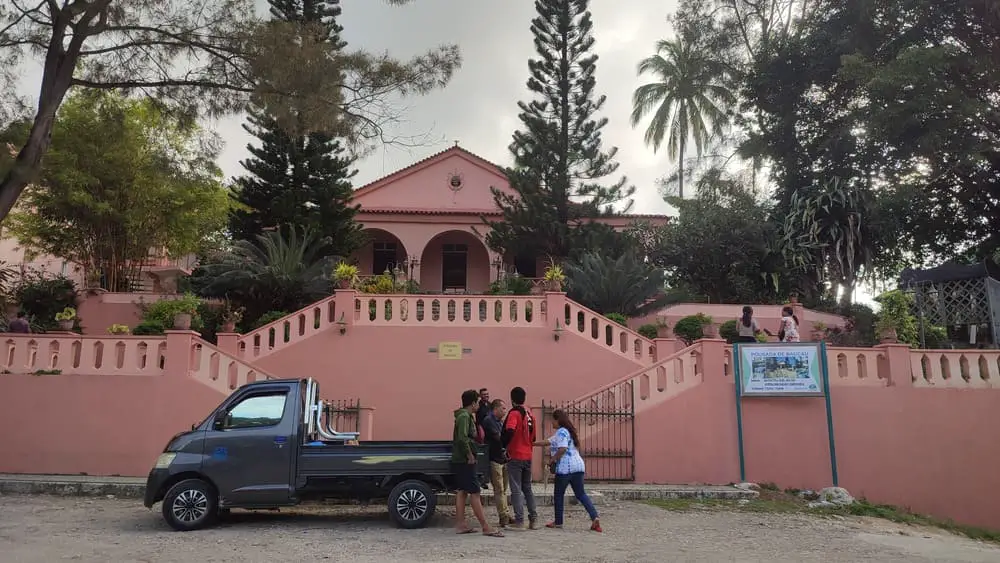
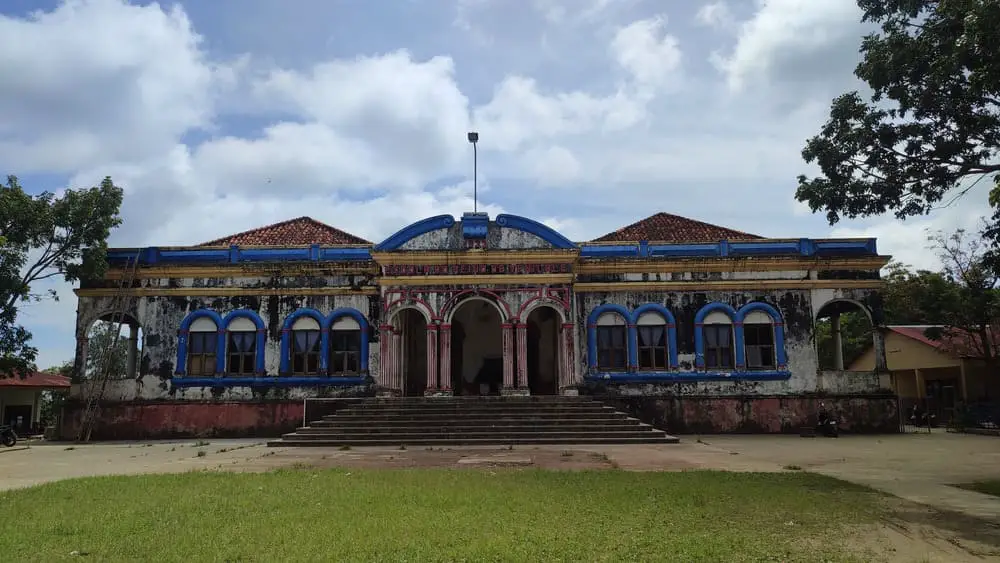
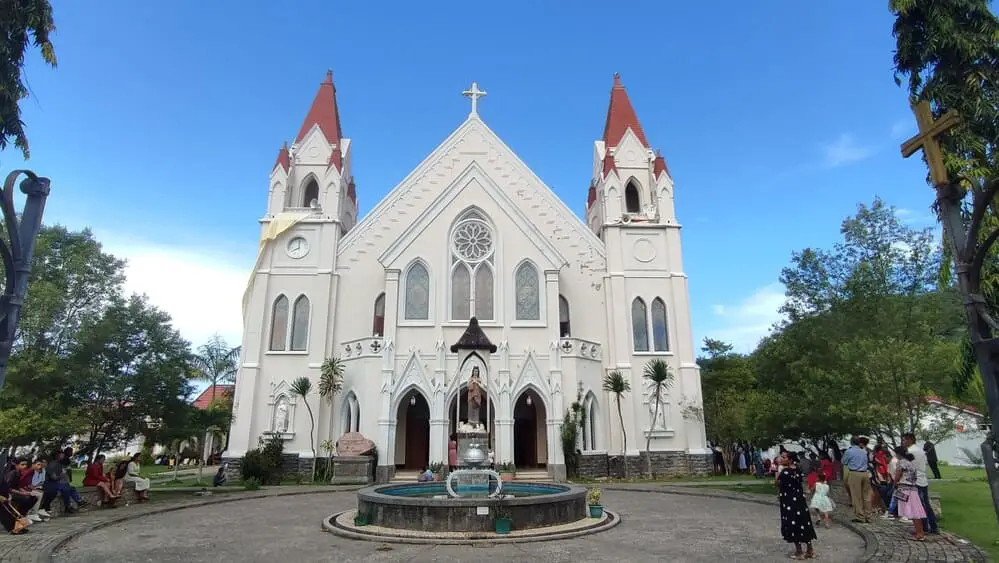


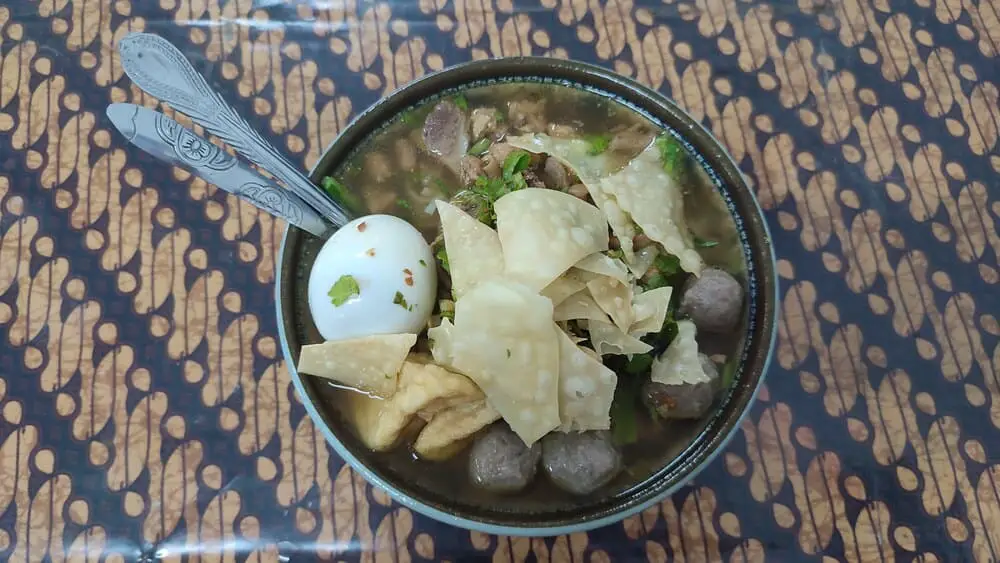
Hi Simon –
Thanks for this super useful and enthusiastic information on Timor Leste.
FYI : The land border between Indonesia and Timor Leste is now open at Wini.
I’ve been in Indonesia and just did a visa run from Kupang, West Timor.
You can take a bus from Kupang (5 hours) or other points to Kefamenanu (‘Kefa’). From there, you take an ojek (IDR 100k or maybe a bit less) or taxi to the border at Wini (90 minutes).
You can get a bemo from the Timor Leste side to Pantai Macassar for about US$2.
Another border crossing has been built at Napan which is only 40 minutes from Kefa, but had not opened as at early June 2024. (We found this out the hard way on sketchy advice).
I’m Australian and a two month visa on arrival (VOA) for Timor Leste cost me US$30 CASH ONLY.
NB Contrary to what I was told in Kupang, there is no currency exchange at the border or anywhere beyond Kefa. Also, no US banknotes issued before 2004 are accepted there or anywhere in Timor Leste. You may be able to exchange them at a bank inside TL.
Thank you for the extremely helpful advice, Damien!
If I understand correctly, a Visa on Arrival for Timor Leste is now available at land borders as well (it wasn’t in 2023). This will save many a redundant trip to the consulate in Kupang.
As to the US banknotes – that’s practically a worldwide rule. If you have old US banknotes in countries with smaller economies, you don’t have anything.
Thanks, I will update the article accordingly,
Have a blast in Timor Leste,
-S.
Thank you Simon –
The point about the $US banknotes makes sense, I just hadn’t been in that situation before.
Another point maybe too obvious to make is to have $US cash before you leave a major city. I was assured by a local travel industry veteran there would be exchange facilities available, but Wini and Napan are quite remote and there was nothing.
Inside Oecusse also, all the local atms were out of cash for three days when I arrived. Caveat!!
All the best
Damien